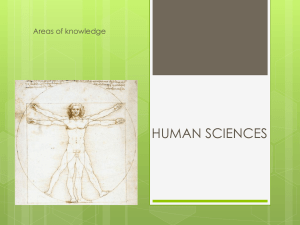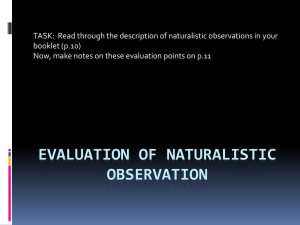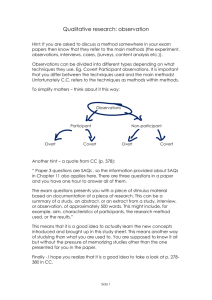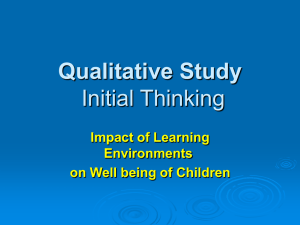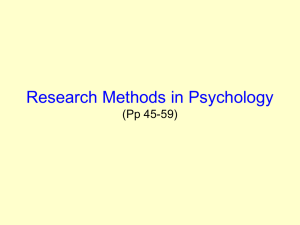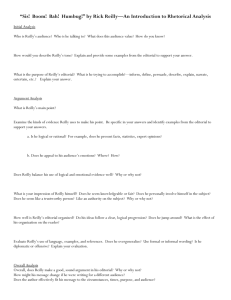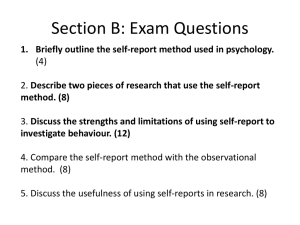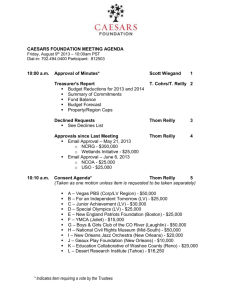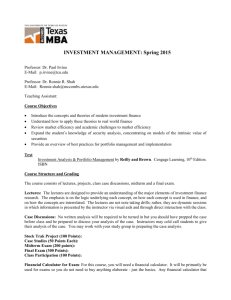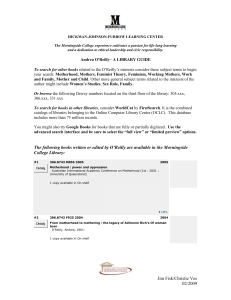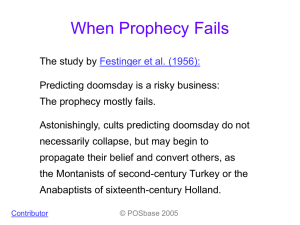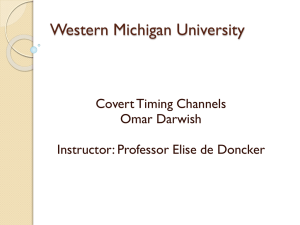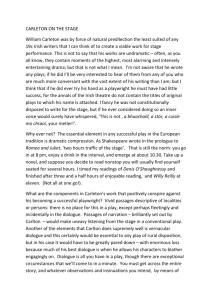naturalistic/participant observation, interviews, case studies
advertisement
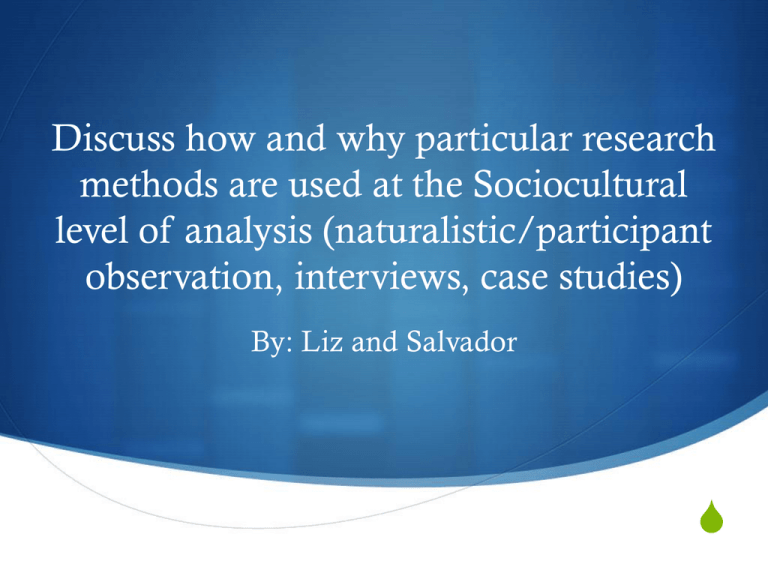
Discuss how and why particular research methods are used at the Sociocultural level of analysis (naturalistic/participant observation, interviews, case studies) By: Liz and Salvador S Background S Sociocultural research’s goal is to see how people interact with each other. S Some experiments may be done to do this research, but most of the research is done qualitatively. S Most of the research done is done in the environment where behaviour is most likely to take place. S Most common methods used: S Naturalistic observation S Participant observation S Interviews S Case Studies Naturalistic Observation S “As it really is” S It is important that the behaviour of the participants is as realistic as possible to avoid studies that lack ecological validity. Participant Observation S Researchers immerse themselves in a social setting for an extended period of time and observe behaviour. S They use these to “see the world through the eyes of the people being studied” S There are two different kinds of observations: S Overt Observations S Covert Observations Overt Observations S Participants know that they are being observed. S O’Reilly (2000) studied British expatriates, people who live outside their native country, on the Costa del Sol. O’Reilly went and spent a great deal of time with the British and observed their behaviour in may different situations. She also held interviews. O’Reilly did not find that they were unhappy with their life or long to return home. Covert Observations S Researcher does not inform the participants that they are being observed. S Leon Festinger et al.’s When Prophecy Fails 1956. There was a cult in Chicago that believed the world would end on Dec. 21st. They thought that when that day hit they would be rescued by flying saucers if they did certain rituals and read sacred texts. Festinger and his team joined the cult to carry out the observation. They stayed with the cult until Dec 21st and monitored the group members’ doubt, debate, and excuses for why nothing happened. Interviews S Used to get more intimate details from those being observed. S O’Reilly, when she did her observation of the British expatriates, also did interviews with each of them. In order to do the interviews she had to be able to gain their trust to be able to get the intimate details from them. She had to be non-judgmental. Case Studies S Observes the behaviour of an individual or a group of individuals. S Often concerned with descriptions or peoples feelings, experiences, or thoughts on a topic. S Used to get a better understanding of those being observed. S At Simon Fraser University in British Columbia, Canada did a case study, studying people with End Stage Renal Disease and the life you had with it. They studied multiple people and found that life with the disease is more work and people living with the disease do the bulk of the work and the families also have to “work” to live with the disease. Questions!!! 1. What are the three different kinds of research methods? 2. What is the differnce between overt and covert? 3. What are the two things you need to do for and in an interview?
